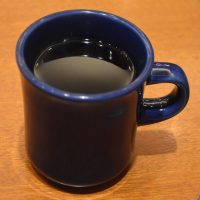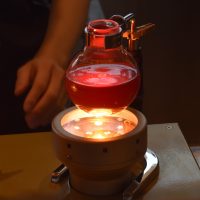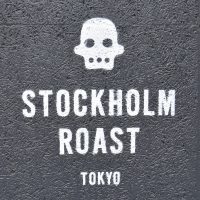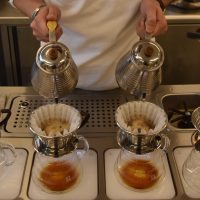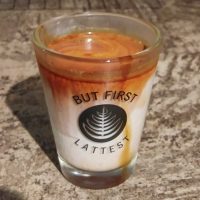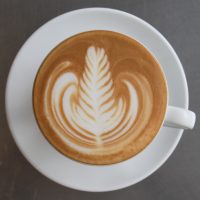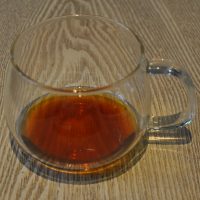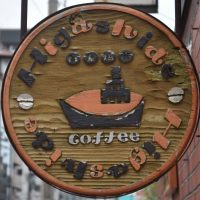 This time last week I was in Kanazawa on the north coast of Honshu, part of my short trip around Japan’s main island, where I unexpectedly found some excellent coffee. I say unexpectedly, since I wasn’t really looking, but I really struck it lucky with my hotel, with great coffee shops of varying styles and character all within a few minutes’ walk.
This time last week I was in Kanazawa on the north coast of Honshu, part of my short trip around Japan’s main island, where I unexpectedly found some excellent coffee. I say unexpectedly, since I wasn’t really looking, but I really struck it lucky with my hotel, with great coffee shops of varying styles and character all within a few minutes’ walk.
Higashide Coffee is a coffee shop/roastery in the mould of a traditional Japanese kissaten, such as Café de L’Ambre or Chatei Hatou, although the layout reminded me of a traditional American diner (Charlie’s Sandwich Shoppe, for example). All the coffee’s roasted on-site using what looks to me, at least, to be a very old Fuji Royal roaster, which sits in the window. In a move that I’ve not seen before, all the green beans are hand sorted before roasting, which is an impressive level of dedication!
There are around 20 origins to choose from, with roasts ranging from fairly light to very dark. They’re all available as pour-over, made to order behind the counter, while there’s also a limited espresso menu, plus a small selection of cakes. Be warned though, Higashide allows customers to smoke and, like many Japanese coffee shops, it’s cash only.

